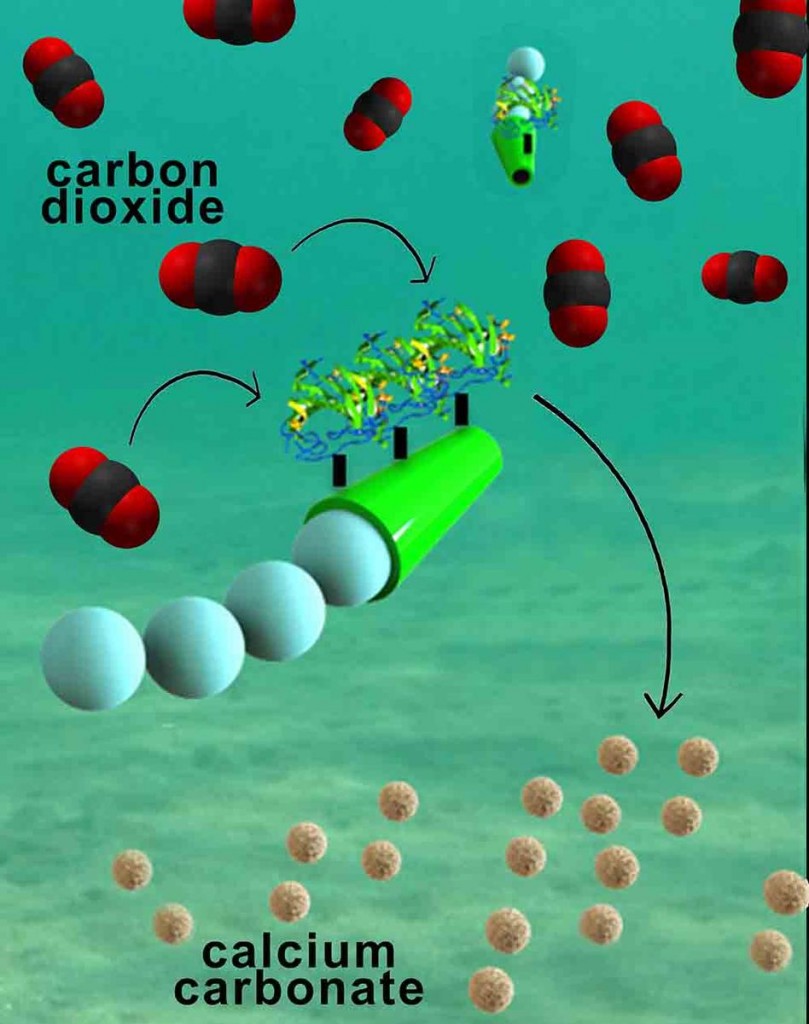Micromotors that Swim and Sequester Carbon Dioxide


The surface of the micromotors is functionalized with carbonic anhydrase, which helps to convert CO2 to CaCO3. The inner surface, coated with platinum, uses H2O2 to generate O2 bubbles and propel the micromotors. Credit: Laboratory for Nanobioelectronics, UC San Diego Jacobs School of Engineering.
Researchers from UC San Diego have developed an innovative tool to fight climate change. In their study, published in the journal Angewandte Chemie, the team lead by Dr. Joseph Wang constructed tube-shaped micromotors functionalized with enzymes that sequester carbon dioxide and a platinum layer to propel them in the water.
Antropogenic carbon dioxide generation is one of the main causes of climate change. Many CO2 capture strategies are being developed to counter the accumulation of this gas in the atmosphere but each has one or several drawbacks related to cost, energy usage or pollutant emission. On the other hand, CO2 is found also in huge quantities dissolved in ocean water. A very interesting approach is the capture of this dissolved CO2 and its storage as solid calcium carbonate. In a proof of concept study, Dr. Wang and his team conceived tiny motors to clean up the CO2 while swimming around.
Carbonic anhidrase and platinum to clean up CO2 and propel the microtube
The micromotors were tested in deionized water saturated with CO2. They are formed by a 6 uM long tube functionalized with several carbonic anhidrase (CA) enzyme copies bound to the outer polymer surface. CA captures the CO2 and transforms it into bicarbonate. Calcium chloride added to the water helps transform the bicarbonate into calcium carbonate, a solid mineral found in sea creatures and used in the food and construction industries. The nanoengineers added 2% to 4% hydrogen peroxide to the solution, which reacts with the tube inner surface, coated with platinum, propelling the microstructure at 100 uM/second thanks to the generated oxygen bubbles. The continuous movement helps to homogeneously mix the solution and to convert more CO2 molecules. In five minutes, 90% of the CO2 was removed from the solution. Later tests in marine water had very similar results, cleaning up 88% of dissolved CO2.

Micromotor moving in sea water. Credit: Laboratory for Nanobioelectronics, UC San Diego Jacobs School of Engineering
In the future, the researchers will try to design devices that do not need hydrogen peroxide and platinum to be set in motion. The engineers devise a water-propelled micromotor, which would be more scalable, cheaper and less contaminant.
Source: UC San Diego

